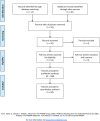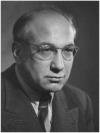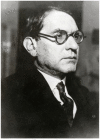Time Distortions: A Systematic Review of Cases Characteristic of Alice in Wonderland Syndrome
- PMID: 34025485
- PMCID: PMC8138562
- DOI: 10.3389/fpsyt.2021.668633
Time Distortions: A Systematic Review of Cases Characteristic of Alice in Wonderland Syndrome
Abstract
Of the perceptual distortions characteristic of Alice in Wonderland syndrome, substantial alterations in the immediate experience of time are probably the least known and the most fascinating. We reviewed original case reports to examine the phenomenology and associated pathology of these time distortions in this syndrome. A systematic search in PubMed, Ovid Medline, and the historical literature yielded 59 publications that described 168 people experiencing time distortions, including 84 detailed individual case reports. We distinguished five different types of time distortion. The most common category comprises slow-motion and quick-motion phenomena. In 39% of all cases, time distortions were unimodal in nature, while in 61% there was additional involvement of the visual (49%), kinaesthetic (18%), and auditory modalities (14%). In all, 40% of all time distortions described were bimodal in nature and 19% trimodal, with 1% involving four modalities. Underlying neurological mechanisms are varied and may be triggered by intoxications, infectious diseases, metabolic disorders, CNS lesions, paroxysmal neurological disorders, and psychiatric disorders. Bizarre sensations of time alteration-such as time going backwards or moving in circles-were mostly associated with psychosis. Pathophysiologically, mainly occipital areas appear to be involved, although the temporal network is widely disseminated, with separate component timing mechanisms not always functioning synchronously, thus occasionally creating temporal mismatches within and across sensory modalities (desynchronization). Based on our findings, we propose a classification of time distortions and formulate implications for research and clinical practice.
Keywords: Zeitraffer phenomenon; classification; multimodal distortion; protracted duration; psychological time; quick-motion phenomenon; slow-motion phenomenon; suprachiasmatic nucleus.
Copyright © 2021 Blom, Nanuashvili and Waters.
Conflict of interest statement
The authors declare that the research was conducted in the absence of any commercial or financial relationships that could be construed as a potential conflict of interest. The reviewer DC declared a past co-authorship with several of the authors JDB, FW to the handling editor.
Figures





References
-
- Heidegger M. Sein und Zeit. Halle: Max Niemeyer Verlag; (1927).
-
- Husserl E. Vorlesungen zur Phänomenologie des inneren Zeitbewusstseins. Edited by Heidegger M.. Halle: Max Niemeyer Verlag; (1928).
-
- Klien H. Beitrag zur Psychopathologie und Psychologie des Zeitsinns. Z Pathopsychol. (1919) 3:307–62.
-
- Fischer F. Zeitstruktur und Schizophrenie. Z Gesamte Neurol Psychiatr. (1929) 121:544–74. 10.1007/BF02864430 - DOI
-
- Tallis R. Of Time and Lamentation. Reflections on Transience. Newcastle upon Tyne: Agenda Publishing; (2017). 10.2307/j.ctv5cg85x - DOI
Publication types
LinkOut - more resources
Full Text Sources
Other Literature Sources

